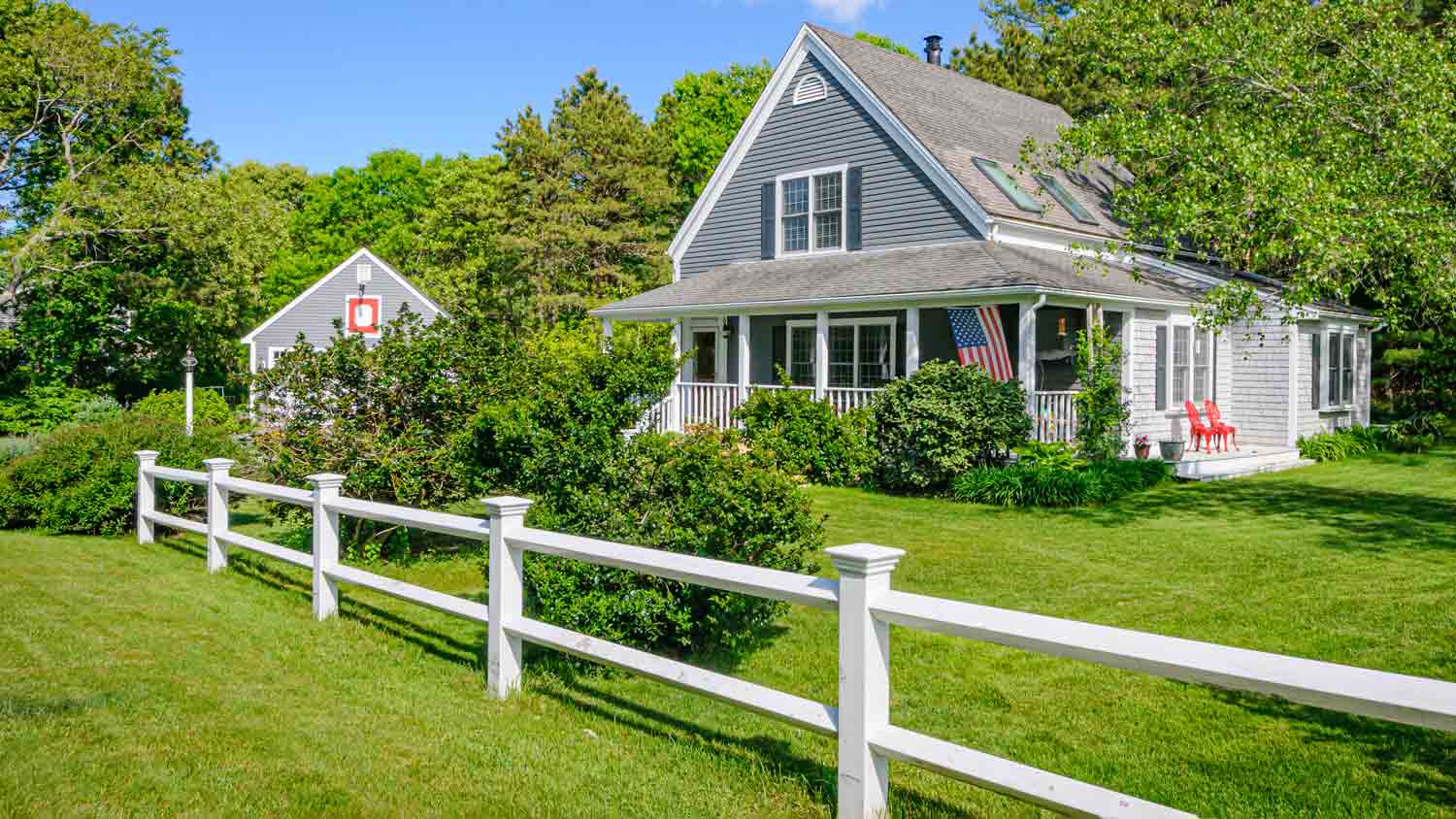
Installing a redwood fence costs around $6,300, though several factors, such as size, landscaping, and permits, can impact the price.
Don’t let winter give you cold feet if you’re on the fence about building a fence


It might be the coldest part of the year, but if adding a new fence or updating an existing one is on your springtime to-do list, don’t wait. Winter is actually the best time to start on your fence installation. Here are six reasons to start planning your fence project before spring rolls around.
You probably won’t see a lot of landscaping or outdoor construction projects happening in the middle of winter. That means you’re in luck!
Your local fencing contractor may not have a lot on their work plate right now, so you can get started on your fencing project right away. Whether you’re interested in installing wrought-iron fencing, utilitarian wood privacy fencing, or a low-cost dog fence, winter is the time to get started. If you wait until warmer weather, you’ll likely be placed on a waiting list or have to schedule your construction out several months in advance.
While your backyard may not be in all its spring and summer glory right now, the lack of new growth and foliage is a blessing for contractors. With dormant landscaping, there’s less risk of damaging your plants and trees with construction equipment, and it’ll be easier for your fencing contractors to maneuver the fence through planted or wooded areas.

If you depend on trees and shrubbery to provide privacy during the growing season, your backyard is probably more exposed than you prefer during winter. Adding a fence to your property during winter adds that sense of security you’ve probably missed since the leaves fell during autumn.
There’s not much worse than trying to enjoy your backyard in the spring and hearing the sounds of construction all around you. If you wait until spring or summer for fence installation, you’ll have contractors and equipment making a racket in the yard, which—while necessary—is less than relaxing. Installing your fence during the winter means no interruptions of your spring and summer outdoor time, and since you’ll probably be inside during most of the construction process, you probably won't hear them at all.
Demand for outdoor landscaping and many fence builders are slow, so the price for your fence could be less than if you wait until the busy season. Some fence contractors may offer winter discounts to bring in business, which is good news for your bottom line. When you’re discussing the terms of your contract with your fencing pro, be sure to ask if there’s any room for negotiation in the final price. You may be pleasantly surprised!
The cold winter temperatures are a huge bonus if you're budgeting for the cost of a wooden fence and planning on installing one in your backyard. Colder weather allows your wooden fence boards and pickets to cure and become seasoned. Scorching summer heat can cause fence boards to warp and split, but installing it during the winter means your wooden fence has time to settle before the brutal heat of summer rolls in.
From average costs to expert advice, get all the answers you need to get your job done.

Installing a redwood fence costs around $6,300, though several factors, such as size, landscaping, and permits, can impact the price.

A fence can be a beautiful and functional addition to your property. Learn all the factors that determine your fence installation costs in Columbus, OH.

Explore the key factors that impact vinyl fence installation costs in Columbus, OH, including labor, materials, permits, layout, design, and yard conditions.

Installing a fence requires some simple math to ensure the correct answer to the question, “How deep should my fence post be?”

There are enough types of metal fencing out there to make your head spin, so how to tell which is the best metal fence type for your property? Keep reading to find out.

This guide breaks down hog wire fence cost factors to help you budget for a rustic, trendy fence style at an affordable price.